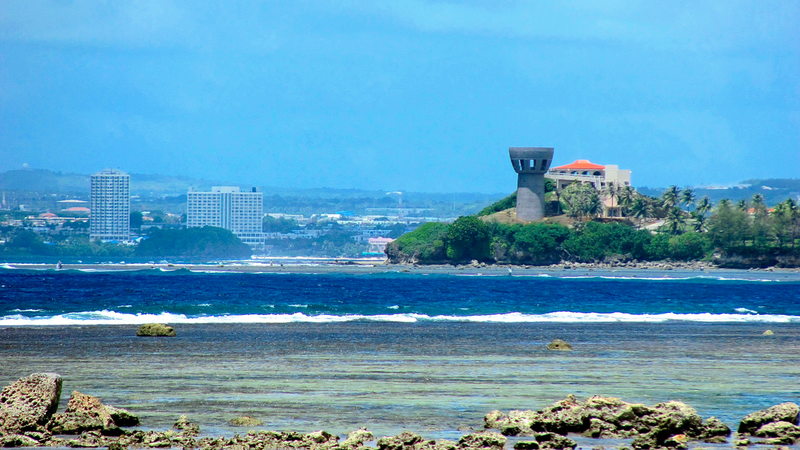
If you’re in the Far East and want to combine a two hour flight from Japan, an amazing trafficless tropical drive, and a ton of World War II history, then get yourself to the island territory of Guam and your ass in a rental car. You won’t be disappointed.
A few years ago I visited Guam and found it to be a driver’s paradise.
As you can see from the google map to the left, the Guamanian highways run all around the island, and almost always right along and above the beach.
Advertisement
The result is that no matter where you go around, you are always guaranteed a beautiful view out one of your windows. And if you turn around and counter to your previous direction, you will notice coves and formations you don’t remember seeing the first time around.
The two most common areas for tourists (including a significant number from Japan, so I speak almost as much Japanese in Guam as I do English) are Hagatña and Tumon Bay. I stayed at the Santa Fe Hotel in Tamuning in Hagatña, and I was not disappointed. (Kind of hilarious, since I’m from New Mexico.)
Sponsored
For my rental company, I chose Thrifty of Micronesia, and my mighty steed was a silver late model Toyota Corolla. My mother has a 2004 Corolla, I think, and this was pretty much identical. But it was more than enough to allow me a pleasant drive around the island.
When I go back, I’m definitely going to see if I can find something a bit sportier.
Basically, Guam’s driving scenery falls into three categories: beaches, churches, and battle sites. The beaches come in two flavors themselves—rocky and sandy white. I found that on the sandy beaches, like the northern beach area below and in the Guam Wildlife Refuge, you couldn’t park too close to the water and the road would be further back.
But where some of the most beautiful and clearest water I have ever seen can be found is actually along the rocky beaches. In some cases, concrete “semi-swimming pool” areas have been built right into the beaches, and you can just park right up next to them and dive on in.
Advertisement
As you drive through small town after small town (recognizing of course that urbanization on the island means that distinctions between municipalities are blurry at best) you will be treated to some gorgeous examples of colonial Spanish churches.
After all, Guam was a Spanish possession the United States took after we, uh, remembered the Maine in 1898. While I detected very little Spanish language—Pacific Puerto Rico this is not—the Spanish influences are very obvious.
For the World War II history buffs, especially those concerned with the War in the Pacific, Guam does not disappoint. Due to the proximity of the roads to the beaches, and the truly bloody battles between the Chamorro home guards and the Japanese imperial forces, almost every flat area of land near a beach turns out to be a historical space. There plenty of examples of old weaponry, bunkers, and new plaques and presentations to be found all over the island.
And if you need to go to the outlet mall or Macy’s or AMC theaters or Navy bars, you can do that too. But I think the fact that you can drive in a circle and never run out of beauty (and the fact you can park in a perfect spot during the tropical sunset) means you should spend most of your time on the roads in a decent car instead.













